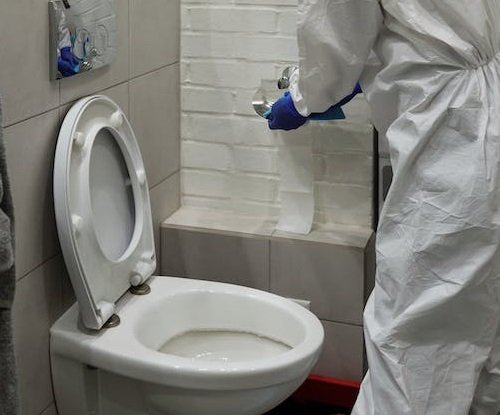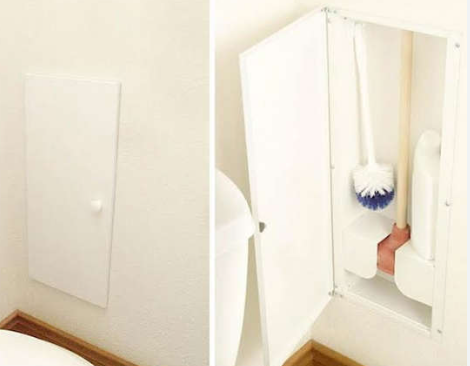A clogged toilet can be a frustrating and inconvenient problem to deal with. In an attempt to fix the issue quickly, some people may reach for a bottle of Liquid Plumber or a similar drain cleaner. However, accidents happen, and it’s not uncommon for someone to accidentally put Liquid Plumber in the toilet instead of the sink or shower drain. If you find yourself in this situation, it’s important to know what to do to minimize any potential damage and ensure the toilet is properly cleared. In this article, we will discuss the steps you can take to rectify the situation and avoid any further complications.
I. Assess the Situation
Before taking any action, it’s crucial to assess the situation and understand the severity of the problem. Here are a few things to consider:
- Determine the amount of Liquid Plumber used: Take note of the amount of Liquid Plumber or drain cleaner that was accidentally poured into the toilet. If only a small amount was used, the consequences may not be as severe as a larger quantity. However, it’s important to treat the situation seriously regardless of the quantity.
- Identify the type of Liquid Plumber used: Different Liquid Plumber products have varying chemical compositions. Check the label to see if it contains hydrochloric acid or other strong chemicals that can potentially damage the toilet. Understanding the ingredients can help you gauge the potential impact and take appropriate measures.

II. Safety Precautions
Handling drain cleaners and accidental spillage requires taking proper safety precautions to protect yourself and minimize the risks involved. Follow these safety measures:
- Ventilation: Open windows or turn on a fan to ensure proper ventilation in the bathroom. This helps dissipate any fumes that may arise from the chemical reaction. It’s essential to avoid inhaling or being exposed to the fumes for an extended period.
- Protective gear: Put on rubber gloves to protect your hands from direct contact with the chemicals. Additionally, wearing safety goggles and a mask can safeguard your eyes and respiratory system from potential splashes or fumes. Always prioritize personal safety when dealing with potentially harmful substances.
III. Dilution Method
One effective approach to mitigating the damage caused by Liquid Plumber in the toilet is by diluting the chemicals. Here’s what you can do:
- Add water: If the water level in the toilet is low, pour in a bucket of water to dilute the liquid plumber. This helps reduce the concentration of the chemicals and minimizes the potential damage to the toilet. The added water will aid in diluting and flushing out the solution.
- Flushing the toilet: Flush the toilet several times to flush out the diluted solution. This will help remove any remaining Liquid Plumber from the bowl and drain. Ensure you flush multiple times to thoroughly clean the toilet and prevent any lingering traces of the chemical.

IV. Neutralizing the Chemicals
To further neutralize the effects of the Liquid Plumber, you can use a neutralizing agent. Consider the following options:
- Baking soda and vinegar: Prepare a mixture of baking soda and vinegar by combining one cup of each. Baking soda is a natural cleaner and deodorizer, while vinegar helps break down organic matter. Pour the mixture into the toilet bowl and let it sit for about 30 minutes. Then, flush the toilet multiple times to help neutralize the chemicals effectively. The combination of baking soda and vinegar can help counteract the effects of the Liquid Plumber and restore the balance in the toilet.
- Lemon juice: Another natural neutralizing agent is lemon juice. Squeeze the juice of several lemons into the toilet bowl and let it sit for an hour before flushing it multiple times. Lemon juice has acidic properties that can help counteract the effects of the Liquid Plumber. The acidity of lemon juice aids in neutralizing the alkaline nature of the drain cleaner, reducing its potential harm.

V. Seeking Professional Help
In some cases, the accidental use of Liquid Plumber in the toilet may cause significant damage or result in persistent clogging. If the situation worsens or you are unable to resolve the issue on your own, it is advisable to seek professional help. Here are a few scenarios where professional assistance is necessary:
- Persistent clogging: If the toilet remains clogged despite your attempts to resolve the issue, it’s best to call a plumber. They have the necessary tools and expertise to diagnose and fix complex clogging problems. A plumber will be able to assess the situation, identify any underlying issues, and provide effective solutions.
- Damaged pipes or fixtures: If you notice any signs of damage to the toilet pipes or fixtures, such as leaks or cracks, it is crucial to seek professional help. A plumber can assess the extent of the damage and provide appropriate repairs or replacements. They will have the knowledge and experience to handle any potential plumbing issues resulting from the use of Liquid Plumber.
Conclusion
Accidentally putting Liquid Plumber in the toilet can be a frustrating and potentially damaging situation. However, by following the steps outlined in this article, you can minimize the effects of the chemicals and restore your toilet’s functionality. Remember to always prioritize safety, assess the situation, dilute the chemicals, neutralize them with natural agents, and seek professional help if needed. With the right approach, you can overcome this mishap and maintain a properly functioning toilet.







